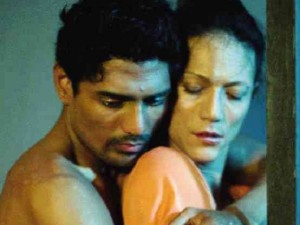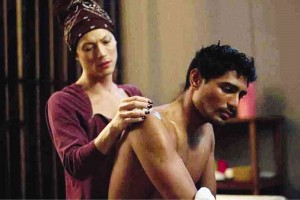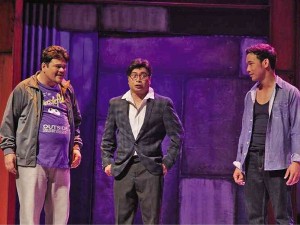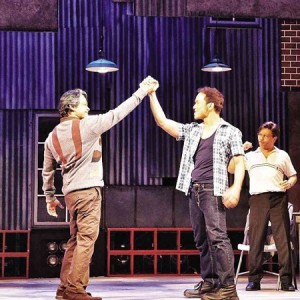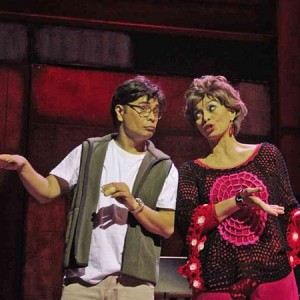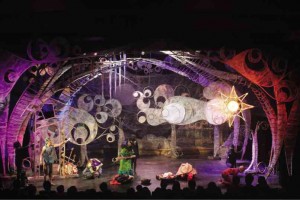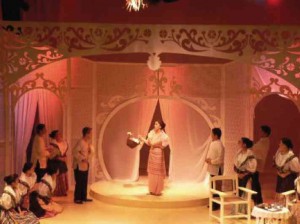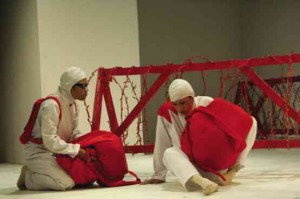Published in Interaksyon Lifestyle Website, August 27 2013
irst, let me start this piece with a disclaimer. This is not a film review, and as such it will not discuss or evaluate the artistic merits of the film such as the direction, production design, editing, cinematography, sound and the other technical aspects that make or break a great film. Otherwise, it would have ended in the Entertainment section of this Web site where my respected peers are more qualified to write a bona fide movie review.
Rather, call this piece a film reflection of the lifestyle—meaning the attitude, paradigms and behavior—of the protagonists in the drama that mirrors perhaps an aspect of our own, which we wrestle with every day although not in so grand or dramatic a scale, fortunately. In that sense, a discussion, and not necessarily a critique, of the performances, story line, and thematics of the film is called for.
And be warned, spoilers are unavoidable.
Portrait of the city
‘Metro Manila,’ another searing portrayal of the underbelly of the nation’s capital as seen through the eyes of an innocent provinciano and his family, will open in theaters on October 5. It has already won critical raves and the Audience Award in the World Cinema-Dramatic category of the prestigious Sundance Film Festival early part of this year. Filipino actors speak Tagalog within the film that takes us from the fields of Banaue to the slums, nightclubs, and vaults of the titular city. English subtitles make the journey more comprehensible for the foreign audience. But what makes the film remarkable is that it was conceptualized, produced, and helmed by British director Sean Ellis who found the initial beginnings of the story when he became witness to an actual robbery while taking a trip in Metro Manila.
‘Metro Manila,’ another searing portrayal of the underbelly of the nation’s capital as seen through the eyes of an innocent provinciano and his family, will open in theaters on October 5. It has already won critical raves and the Audience Award in the World Cinema-Dramatic category of the prestigious Sundance Film Festival early part of this year. Filipino actors speak Tagalog within the film that takes us from the fields of Banaue to the slums, nightclubs, and vaults of the titular city. English subtitles make the journey more comprehensible for the foreign audience. But what makes the film remarkable is that it was conceptualized, produced, and helmed by British director Sean Ellis who found the initial beginnings of the story when he became witness to an actual robbery while taking a trip in Metro Manila.
According to some of the earlier write-ups that emerged preceding the premiere of the film last month, Ellis originally wrote the movie in English – and had the cast members themselves translate the dialogue into Tagalog. If true, that approach pretty much explains why the onscreen English translation flashed on the screen captured the essence of the Tagalog words spoken by the cast (or should it be vice-versa?). Unlike many of its counterparts, the translation was happily far from translatese.
Perhaps it is the British perspective, but the old haunts that we are used to suddenly appear in a different light, without losing their familiarity. Metro Manila echoes films like Lino Brocka’s classic Maynila: Sa Kuko ng Liwang where the innocent soul is uprooted from his provincial roots to find his fate in the Big Bad City. This stranger-in-a-strange-land tales rarely end in happiness; tragedy is often the aftermath, adding another victim to those who had already been killed by injustice, poverty, corruption and the other social sins you can think of.

The challenges and travails of living in the city is depicted in ‘Metro Manila.’ In photo are actors Jake Macapagal, Althea Vega, and Erin Panlilio. Photo courtesy of Captiva Cinema Distribution.
What makes Metro Manila different is that the poor Filipino, in this case farmer-turned-security-guard Oscar Ramirez (Jake Macapagal) does not accept his fate blindly but rages against the dying of the light in order to protect his family. He does it as a Pinoy caught in the same situation would. There are no unrealistic heroic protestations and no fighting-against-the-windmills campaigns. In fact, the film shows that another honest victim did – and failed, agonizingly; as a consequence, like the executions of leaders in Imperial Rome, his entire family suffers without his protection.
Going against type
Oscar does not do any grand gestures, except understandably try to slug his mentor, Ong (John Arcilla) who was seducing him slowly into the dark side. Ramirez knows the odds are against him and his family. His wife Mai reluctantly dances in a bar, and their 9-year-old daughter is being eyed by the Mama-san for her customers “with special needs.” Oscar himself was lured into becoming a pawn by Ong in his machinations to get back against the system while earning retirement money for himself through the largess of their rich clients’ entrusted funds. Once Oscar finds out the truth, Ong gives him only two horrific choices: Play along and get a cut of the big bucks, or be implicated and you and your family will be thrown in jail.
Oscar does not do any grand gestures, except understandably try to slug his mentor, Ong (John Arcilla) who was seducing him slowly into the dark side. Ramirez knows the odds are against him and his family. His wife Mai reluctantly dances in a bar, and their 9-year-old daughter is being eyed by the Mama-san for her customers “with special needs.” Oscar himself was lured into becoming a pawn by Ong in his machinations to get back against the system while earning retirement money for himself through the largess of their rich clients’ entrusted funds. Once Oscar finds out the truth, Ong gives him only two horrific choices: Play along and get a cut of the big bucks, or be implicated and you and your family will be thrown in jail.
Three-fourths into the film, Oscar and his family appear as the usual archetype in any Pinoy film of this genre: the naïve scapegoat who must join the system or sacrifice his life. Oscar does make a huge sacrifice – but it buys his family their freedom. And whether or not he intended to, he actually becomes the master of his own destiny, up to the last moments. The twist of the film – and hard-pressed for anyone to see it coming – has Oscar taking his life back from the system. Forget the pity party or the Pinoy as the proverbial victim – this provinciano becomes the ultimate player.
And Oscar pulls it off in character as the ‘typical Pinoy’: scared, numb, desperate, praying throughout while always keeping his family in mind.
What makes this triumph glorious is recognizing the battles that Oscar and his family had to fight to keep themselves and their sanity intact. The honest, hardworking but poor Ramirezes are noble to the core – which gets the audience on their side while making them easy prey for more treacherous wolves. Homeless, penniless, they would strain to do the right thing even if it hurts. If the first reaction is always the honest one, then Mai’s spontaneous plea to Oscar to return money that was not his is just one example of the couple’s moral core. Or take their little 9-year-old girl who, without thinking of the consequences to herself, rescues a stray kitten that is being beaten by bullies.
All too noble, true—and yet until the final pay-off, you wonder how long this family will last, or what form their tragic bloody end would take.
The film also does a splendid job of pitting one homegrown Filipino value against another, without preaching from a soap box. The couple’s regular utterance of their belief in the Almighty to see them through during the tough times can appear to be a bedrock of strength in one scene, and a defeatist statement in another. Oscar constantly weighs his desire to do what is right versus the debt he feels (‘utang na loob’) he owes Ong, his older brother-teacher-tempter. The choices are agonizing, and to the Pinoy psyche, does not appear to be automatically cut-and-dried although the morality as the couple sees them is portrayed as black-and-white.
Ultimately, and not surprisingly, the one value that prevailed was the love for family, probably the one value that characterizes the Filipino. Family above principle, family above the temptation to succumb to what you know is wrong, family over personal survival.
The ending is far from Pollyanish. The last words of Oscar say it all—and I paraphrase: “We won not because we believed in dreams, but because we knew there was no way out.”


